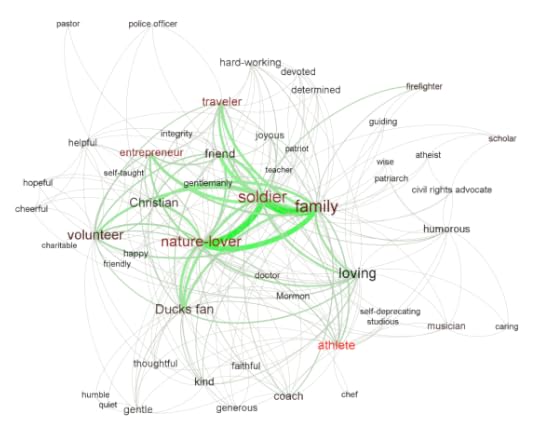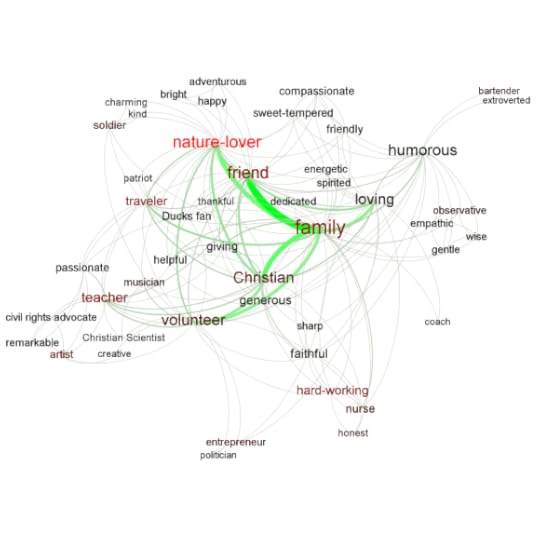How We Speak Of The Dead
Philosopher Mark Alfano gets a sense of the gender divide:
As a first pass, I read through a month’s worth of obituaries from my local paper, the Eugene [Oregon] Register-Guard, and noted all of the agent-level descriptions and evaluations of the deceased. In other words, I ignored what was said about hospice workers (not that their work is unimportant – quite the contrary) and single actions of the deceased, recording only the words used to describe him or her as a whole person.
One thing I immediately noticed was that there were systematic differences in how the men and the women were described. Unsurprisingly, a huge proportion of the men had fought in World War II, and thus were described as soldiers. The women – not so much. This suggested that there might be other, more subtle, systematic differences. Andrew [Higgins, of the University of Illinois at Urbana-Champaign] took this initial batch of data and created semantic maps of the things said about the men and the women. [Above is] the one for men.
Women, on the other hand, were recalled as “humorous” more often than men – sorry Hitch:



Andrew Sullivan's Blog
- Andrew Sullivan's profile
- 153 followers





